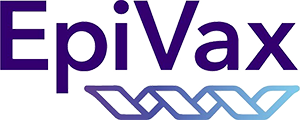So, you say, why not? Why wait for Gritstone, BioNtec, Neon or even EpiVax Oncology when you can just DIY? If you can now sequence your own cancer mutanome (for about $5,000), and predict your own mutated epitopes using online tools, why not?

DIY Cancer Vaccines – It’s a Thing
Some cancer patients are already doing just that. For starters, There’s a DIY guide out for patients who have EGFR T790M mutations. It provides information on where to get HLA typed, how to buy the HLA -restricted peptides that represent the mutation, how to formulate the peptides and administer subcutaneously, adding the toll-like receptor agonist-in–a-cream Aldara topically after administering the vaccine.
Putting my patient advocate hat on, I’m all for it. But knowing what I know about deceptive peptide synthesis companies, and the vagaries of online epitope prediction tools, I think that we’re not quite ready for DIY. Don’t get me wrong. In the future, we want to get to a place where a patient can visit their clinician, and, in partnership, decide to produce the patients’ own personalized cancer vaccine. But I don’t think we’re at that point yet.
Putting my immunologist hat on, I think that we have to be careful about the selection of epitopes. Never mind the fact that mutations in cancer genomes have to be differentiated from mistaken sequencing reads. Never mind the fact that epitope-prediction tools are not 100% accurate (although we work darn hard to make ours the best in the world). Pay more attention to the fact that cancer has many means of escaping immune response, including down-regulating HLA and acquiring defects in antigen presentation. We’ve recently proposed a new mechanism of immune escape: immune camouflage. We have observed that viruses and bacteria introduce human-like, tolerizing “Treg” epitopes into their genomes – and we have seen enough cancer mutations in our recent unpublished research to believe that some cancer mutations may be tolerogenic, too.
Putting my vaccine development hat on, too, here are my hesitations. (1) It’s experimental. We don’t yet know if personalized cancer vaccines will work, even if we believe they will. Would they work better in conjunction with other treatments (such as checkpoint inhibitors)? Or would they be best if given on their own? Finding out how and when to administer the vaccines will take prospective, controlled research studies, where both positive and negative effects are carefully monitored. (2) Desperation may enable quackery and opportunism, leading to new regulations that could detrimentally impact access to personalized cancer vaccines.
There is huge hope in personalized cancer vaccines. We believe in them, and so, we are working hard to make our Ancer pipeline available for individual patients. Soon, under the aegis of EpiVax Oncology, we hope to open the door to more patients in several collaborative, prospective clinical trials. But for now, let’s proceed with caution, because leaping forward too quickly could be dangerous to patients. This is the promise that I made when graduating from medical school in 1983, and I stand by it: First, do no harm.

